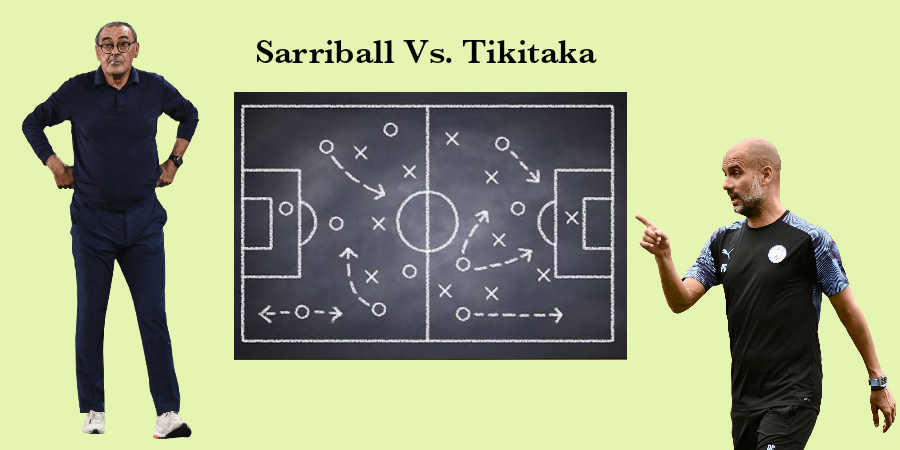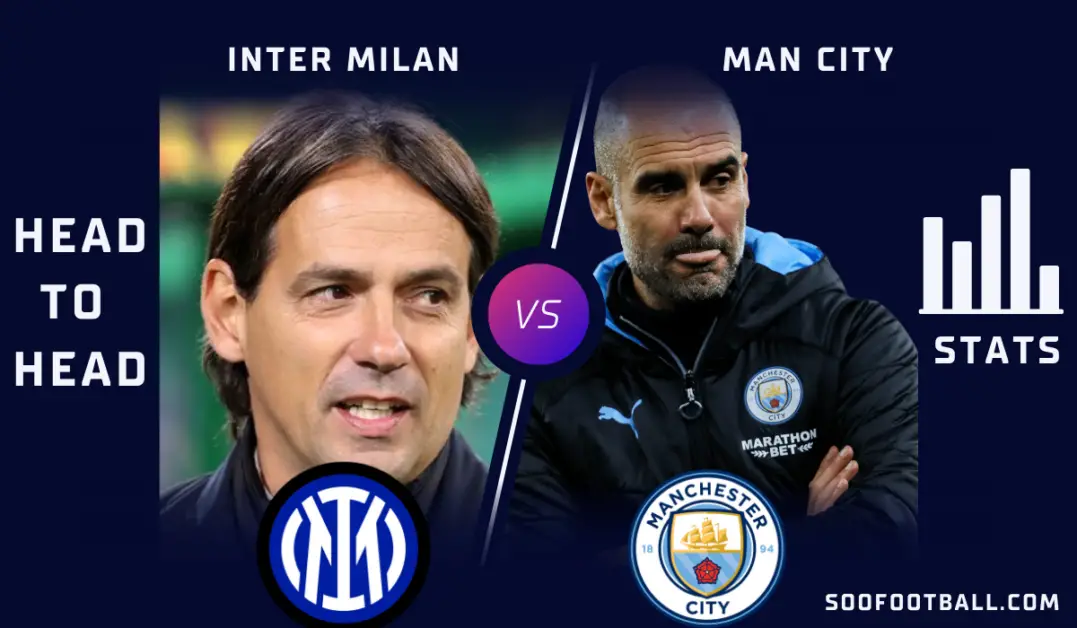In Football, two key positions often steal the spotlight: the midfielder and the striker. They play different roles on the field, and understanding the differences between them can deepen your appreciation of the game. In this article, we’ll dive into the comparison of Midfielder vs Striker.
We’ll break down their positions, responsibilities, playing styles, and the unique impacts they have on the game. Whether you’re a die-hard football fan or just getting into the sport, this comparison will help you grasp what sets these two positions apart and why they are so important in football.
The Role of a Midfielder
Midfielders are the unsung heroes of the football pitch, often shaping the game’s flow and outcomes. Let’s break down their role into key aspects:
Positioning on the Field
Midfielders usually hang out in the middle of the field, as the name suggests. They act as a bridge between the defense and attack. Some midfielders may stay closer to the defense, while others venture forward towards the opponent’s goal.
Responsibilities and Duties
Midfielders have diverse duties:
- Passing: They are masters of passing, distributing the ball to teammates to create scoring opportunities.
- Defense: They help protect their own goal by intercepting passes and tackling opponents.
- Creating: Midfielders often create chances by delivering precise through-balls or crosses to strikers.
- Ball Retrieval: They work hard to regain possession when their team loses the ball.
Playing Style and Attributes
Midfielders exhibit various playing styles:
- Playmakers: Some are playmakers who orchestrate the team’s movements with their vision and passing ability.
- Box-to-Box: Others are known as “box-to-box” midfielders, tirelessly covering ground from defense to attack.
- Defensive Midfielders: Some specialize in breaking up opponents’ plays and protecting the defense.
- Versatility: Midfielders are known for their adaptability, often switching between roles during a match.
Examples of Legendary Midfielders
Legendary midfielders have left their mark on the game. These are a few of them:
- Andres Iniesta: The Spanish maestro from FC Barcelona was known for his exceptional dribbling and playmaking skills.
- Zinedine Zidane: Zidane, the French magician, combined grace and precision with his passing and dribbling.
- Xavi Hernandez: Another Barcelona legend, Xavi, was renowned for his incredible vision and ability to control the tempo of the game.
For clarity, check out our compiled list of best midfielders of all time and best goal scoring midfielders.
The Role of a Striker
Strikers are the goal-scorers, the ones who make the fans cheer with their exciting plays. Let’s take a closer look at their role:
Positioning on the Field
Strikers usually play closer to the opponent’s goal, often right up front. They are the ones trying to score the goals, so you’ll often see them in the penalty box, waiting for a chance to shoot.
Responsibilities and Duties
Strikers have some very important responsibilities:
- Scoring Goals: Their main job is to score goals for their team. They need to be good at shooting the ball accurately and making it past the goalkeeper.
- Creating Opportunities: Strikers can also help set up goals by making passes or assists to their teammates.
- Pressuring the Opponent: They play a part in putting pressure on the opposing defenders, trying to force mistakes.
- Positioning: Strikers must be in the right place at the right time to take advantage of scoring opportunities.
Playing Style and Attributes
Strikers need specific skills and attributes:
- Finishing Skills: They should be excellent at finishing scoring chances, whether it’s with their feet, head, or any part of their body.
- Speed: Being quick can help them beat defenders and get to the ball first.
- Agility: Good strikers are often agile, able to change direction quickly.
- Instinct: Scoring often requires quick decisions, so they need great football instincts.
Read Also: List Of Some Overrated Strikers In Football History
Examples of Legendary Strikers
There have been countless legendary strikers throughout football history. Here are a few names that stand out:
- Pelé: The Brazilian striker is often regarded as one of the greatest footballers of all time. He won three World Cups and scored over 1,000 career goals.
- Ronaldo De Lima: Known for his incredible athleticism and goal-scoring ability, Ronaldo has been a star for clubs like Inter Milan, Real Madrid, and his country Brazil. It took a career-ending injury to prematurely end his career.
- Marco van Basten: Although his career ended at just about 28, van Basten’s goal-scoring record as a Striker is phenomenal. He spent most of his career with Ajax and AC Milan before hanging his boots.
To be clear, players like Cristiano Ronaldo and Messi are not generally regarded as Strikers even though they have great goal-scoring records. Read up on the difference between Strikers and Forwards.
Midfielder vs Striker: The Key Differences
Midfielders and strikers may both be vital to a football team, but they have distinct roles and responsibilities that set them apart. These differences have a significant impact on how the game is played. Let’s break down these distinctions:
| Aspect | Midfielder | Striker |
|---|---|---|
| Primary Objective | Creating opportunities for goals | Scoring goals |
| Field Positioning | Central, covering more ground | Forward, close to opponent’s goal |
| Defensive Contributions | Often involved in defense | Frontline Pressing. |
| Role in Team Strategy | Control tempo, ball distribution | Goal-scoring strategy |
See below a further details about the difference between a midfielder vs striker.
Scoring vs. Creating Opportunities
Midfielders: Midfielders are more about creating opportunities for their team to score. They often set up plays, make key passes, and contribute to the build-up of attacks. While some midfielders do score goals, it’s not their primary role.
Strikers: Strikers are all about scoring goals. Their main focus is finding the back of the net. While they may assist their teammates, their primary duty is to put the ball in the opponent’s goal.
Field Positioning and Movement
Midfielders: Midfielders tend to cover more ground on the field. They move between defense and attack, making themselves available to receive passes and distribute the ball. Their positioning is usually central.
Strikers: Strikers have a more forward position. They stay close to the opponent’s goal, looking for opportunities to get behind the defence and take shots on goal.
Defensive Contributions
Midfielders: Midfielders are often involved in defensive duties. They help win back possession and disrupt the opponent’s plays. Their defensive contributions are crucial for maintaining team balance.
Strikers: Strikers are not primarily responsible for defence. While they may press the opponent’s defenders to create turnovers, their main focus is on offensive actions.
Role in Team Strategy
Midfielders: Midfielders play a central role in controlling the tempo of the game. They dictate how fast or slow the team plays and are instrumental in ball retention and distribution. Team strategies often revolve around the midfield.
Strikers: Strikers are key elements in a team’s goal-scoring strategy. Tactics may involve playing to the strengths of the striker, creating chances for them, and utilizing their goal-scoring abilities.
Understanding these key differences is essential for appreciating the intricacies of football and how each player contributes uniquely to their team’s success. Whether orchestrating plays from midfield or finishing them up front, midfielders and strikers bring their distinct skills to the beautiful game.
Midfielder vs Striker – Impact On The Game
Midfielders and strikers are like the yin and yang of football. Midfielders control the flow of the game, while strikers provide the critical finishing touch. Here, we’ll delve into their unique roles in influencing football matches.
How Midfielders Influence Matches
Midfielders, often referred to as the engine room of a team, hold a multifaceted influence over matches. Their impact extends across various aspects of the game. Primarily positioned in the middle of the field, midfielders are responsible for controlling the tempo. They dictate the pace of play, deciding whether to accelerate into swift attacks or maintain possession through patient passing.
Furthermore, midfielders are the architects of opportunities. Their exceptional ball control and vision enable them to create scoring chances for their team. They act as the playmakers, threading precise passes, and initiating attacks. Simultaneously, they’re not limited to offensive duties; midfielders contribute significantly to defensive stability. They disrupt the opponent’s advances, making crucial tackles, interceptions, and recoveries.
The ability to control the tempo and adapt to various situations makes midfielders invaluable assets to any team’s strategy. Their presence is often felt as the orchestrators of the game, seamlessly transitioning between offence and defence to keep their team in control.
How Strikers Impact Matches
On the other end of the spectrum are the strikers, the goal-hungry forwards who specialize in transforming opportunities into goals. Positioned closer to the opponent’s goal, strikers are the sharp end of the attacking spear. Their primary responsibility is to score goals, making them the focal point of a team’s offensive efforts.
The influence of strikers extends beyond mere goalscoring. Their relentless pressure on the opponent’s defence can force errors and create turnovers.
A single goal from a striker can drastically shift the momentum of a match, inspiring their team and disheartening their opponents. Strikers possess the unique capability to turn a tightly contested game into a decisive victory with their clinical finishing.
Balancing a Team’s Midfield and Attack
Achieving a harmonious blend of midfield control and attacking prowess is the key to a team’s success. Teams with dominant midfielders often exhibit a disciplined and patient approach to the game.
They excel in retaining possession, controlling the rhythm, and creating a multitude of scoring opportunities. In contrast, teams with prolific strikers are adept at capitalizing on limited chances, converting them into goals efficiently.
The most successful teams, however, strike a synergy between these two aspects. They seamlessly transition from midfield creativity to attacking ferocity, creating a well-rounded and formidable force on the pitch. Such teams not only control the game but also possess the capacity to ruthlessly punish their opponents when the chance arises.
Conclusion
The perennial clash of the midfielder vs striker defines the captivating narrative of every match. These two distinct positions, each with its unique set of responsibilities and attributes, orchestrate the symphony of goals, assists, and thrilling moments that fans cherish.
Midfielders, the midfield maestros, are the conductors of the game. They control the tempo, sculpt scoring opportunities, and serve as the linchpin of both offensive and defensive strategies. In contrast, strikers are the sharpshooters, the goal-scoring artisans who transform chances into euphoric moments. Their relentless pursuit of the back of the net has the power to swing the pendulum of a match.
However, the magic of football lies in the delicate balance between midfield and attack. Successful teams understand that it’s not an either-or proposition. It’s the synergy between midfield creativity and striking prowess that yields victory. Such teams navigate the game’s complexities with finesse, embracing the full spectrum of football’s beauty.
In the end, whether it’s the midfield orchestrating the symphony or the striker delivering the crescendo, the midfielder vs striker dynamic keeps us enthralled, reminding us that football is not merely a sport but an art form where every pass, tackle, and goal contributes to the timeless saga of the beautiful game.






